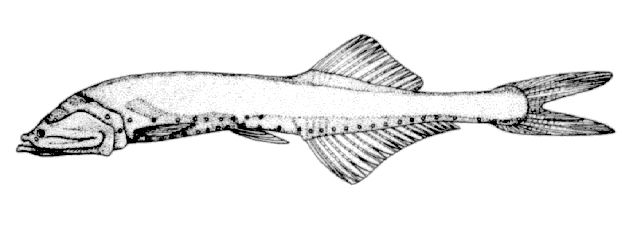| Gonostomatidae (Bristlemouths) |
| 6.2 cm SL (male/unsexed) |
|
bathypelagic; marine; depth range 298 - 4938 m |
| North Pacific: temperate and subtropical, from southern Japan to Baja California, from 21°N and into the Bering Sea. |
|
Dorsal spines (total): 0-0; Dorsal soft rays (total): 12-15; Anal spines: 0-0; Anal soft rays: 17-20; Vertebrae: 31-33. Body dark-brown or black; margin of scale pockets especially dark; area immediately anterior to anal origin densely pigmented and not transparent; peritoneum black, ending above area between 3rd and 4th VAV, usually invisible from the outside (Ref. 559). Gill lamellae free and reduced (Ref. 559). |
| Meso- to bathypelagic (Ref. 58302). Inhabits deep water and is only captured with special equipment. Lipid content is 4.0 % in fresh body weight and wax ester is 58.4 % in total lipid (Ref. 9193). Protandrous hermaphrodite, oviparous with planktonic eggs and larvae (Ref. 35800). |
|
Least Concern (LC); Date assessed: 15 July 2019 Ref. (130435)
|
| harmless |
Source and more info: www.fishbase.org. For personal, classroom, and other internal use only. Not for publication.

